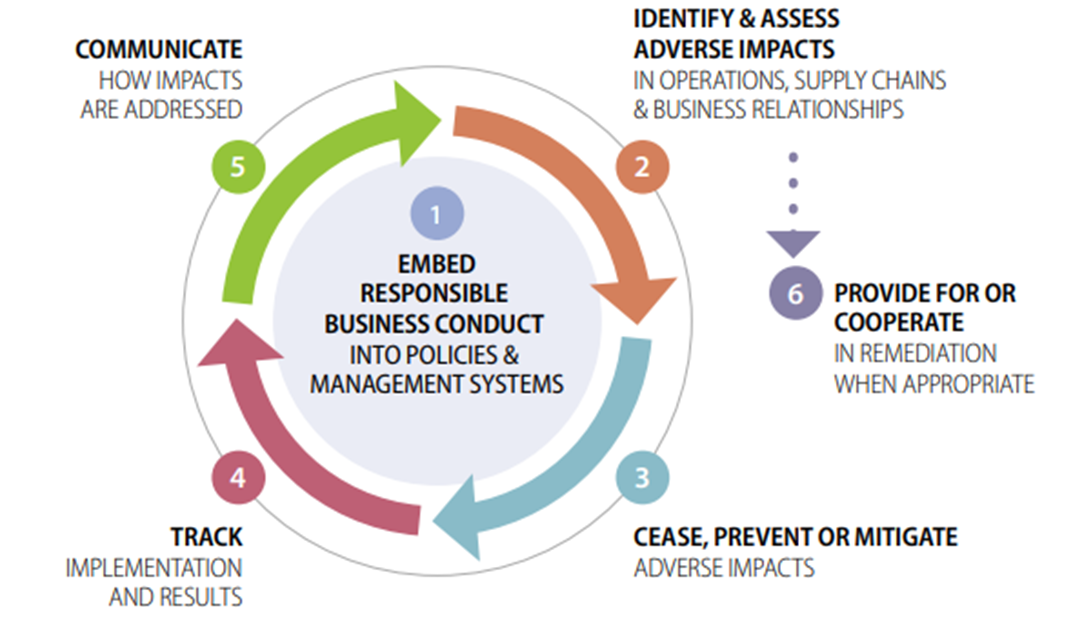Due diligence: How does it work?
The agreement is based on the UN Guiding Principles on Business and Human Rights and the OECD Guidelines for Multinational Enterprises. Risk management is undertaken through a process known as due diligence. The process consists of six steps that must be repeated continuously (see Figure). The agreement offers tools and experts to assist companies with implementing these six steps.
The six steps:
- Embed RBC into policies and management systems
- Identify and assess actual and potential adverse impacts
- Cease, prevent and mitigate adverse impacts
- Track implementation and results
- Communicate how impacts are addressed
- Provide for or cooperate in remediation
Companies that have signed the agreement commit themselves to this due diligence process. Due diligence is a continuous process and therefore requires constant attention. It is how companies actively promote improvements in the supply chain concerning environmental and human rights and biodiversity. They also respond actively and proactively to changes in national or international law involving due diligence and new risks.
Companies remain responsible at all times for performing due diligence properly. Industry associations, NGOs, trade unions and the government support them in their efforts. Together, they can manage risks and boost the level of transparency in the metals supply chains.
In order to support the member companies in conducting due diligence, various tools have been bundled in the user-friendly 'due diligence web tool'. In this way, care is taken to minimize the administrative burden, with maximum results.

Source: OECD (2018), OECD Due Diligence Guidance for Responsible Business Conduct, p. 21.
